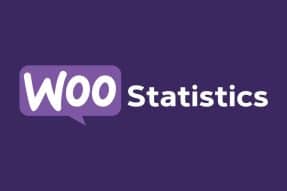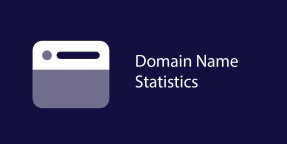Online Education Statistics (How Popular Is Online Education?)
With the popularity of eLearning came demands for in-depth online education statistics.
Many schools and universities around the world are shifting to online learning. At the same time, businesses are introducing online staff training (to save money), and applications and platforms offer 1,000s of courses to learn about anything and everything.
Thus, having a better understanding of the impact and effectiveness of online and distance learning is necessary.
Together with our team, I’m sharing with you the most extensive list of stats, so let’s dive right in.
In this statistical roundup, you’ll learn about online education’s popularity, how many online students are there, market share, when it all started, and HEAPS more.
This post covers:
- How Popular Is Online Education?
- Online Education Enrollment Statistics
- Online Education Statistics By Country
- Online Courses Statistics
- Other Interesting Online Education Statistics
Online Education Statistics (Our Top Picks)
- Global online education will be worth $239 billion by 2027
- The US generates the most online education revenue, $74+ billion
- There will be approximately 1 billion online students globally in 2027
- Denmark had the best eLearning conditions in 2021 (Ireland the worst)
- 40% of North American learners use mobile to study online
- The average age of an online student globally is 32
- Coursera has 113+ million students
- Online education started in 1989
- IBM saved $200 million after adopting online corporate learning
How Popular Is Online Education?
1. Global online education is expected to be worth $239 billion by 2027
The revenue in the online education sector has been growing steadily (at a growth rate of approximately 9.5% CAGR) around the world for the past decade. It’s forecast to reach $166 billion in 2023, but long term, Statista predicts a jump to $239 billion by 2027.
Global online education revenue growth over the years
| Year | Online education revenue |
| 2027 | $239.26 billion |
| 2026 | $220.79 billion |
| 2025 | $203.81 billion |
| 2024 | $185.19 billion |
| 2023 | $165.55 billion |
| 2022 | $146.88 billion |
| 2021 | $133.49 billion |
| 2020 | $ 114.06 billion |
| 2019 | $88.02 billion |
| 2018 | $75.15 billion |
Source: Statista
2. Online university education is the online education market’s largest segment
Out of all online education, online university education is the most popular, estimated at $103 billion in 2023. The second largest segment is online learning platforms and the third is professional certificates.
Global online university education revenue growth over the years
| Year | Online university education revenue |
| 2023 | $103.8 billion |
| 2022 | $85.5 billion |
| 2021 | $72.33 billion |
| 2020 | $60 billion |
| 2019 | $47.5 billion |
Source: Statista
3. The US generates the most online education revenue, $74+ billion
Out of all the countries, online education is the most popular in the United States, predicted at approximately $74+ billion in 2023.
As a reference, in China, online education’s revenue in 2020 was $61 billion, but the 50% growth in Russia prior to the war won’t be reached – it’ll drop to around 20%. (In Russia, online university courses generated $183+ million in 2021.)
Source: Statista
4. Chinese University MOOC/iCourse has the largest market share (14%)
The three largest online education brands in the world are Chinese University MOOC/iCourse (14%), Zhihuishu (9%) and BYJU’S (2%). Udemy has a market share of 1%.
| Brand | Market share |
| University MOOC/iCourse | 14% |
| Zhihuishu | 9% |
| BYJU’S | 2% |
| University of Phoenix | 2% |
| Western Governors University | 2% |
Source: Statista
5. There will be approximately 1 billion online students globally in 2027
Just like the online education industry is growing revenue-wise, there are more and more online students every year.
However, while online university education generates the most revenue, most students are in the online learning platform segment.
| Year | Total online education students |
| 2027 | 1.032 billion |
| 2026 | 0.98 billion |
| 2025 | 0.93 billion |
| 2024 | 0.86 billion |
| 2023 | 0.80 billion |
| 2022 | 0.75 billion |
Source: Statista
6. Tal Education Group is the leading online learning platform in generating revenue
In 2020, Tal Education Group (China’s online learning solution) generated the most revenue, $4.51 billion.
| Online learning solution | Revenue |
| Tal Education Group | $4.51 billion |
| New Oriental Education & Technology Group | $4.28 billion |
| 2U | $770 million |
| Udemy | $430 million |
| Coursera | $290 million |
One source states that Coursera is worth more than $1 billion.
Source: Statista, Forbes
Online Education Enrollment Statistics
. New Hampshire had the most online enrolled students in 2021 in the US
At 74.1% of students enrolled exclusively in distance education, New Hampshire had the highest percentage in 2021. The rest of the students were either enrolled in some classes (6.4%) or not enrolled in any (19.6%).
A few other states with a high percentage of exclusively enrolled in distance education were Hawaii (51.5%), Arizona (51.3%), West Virginia (48.7%) and Alaska (48.2%).
Source: NCES
7. A 29 million enrollment increase for edX
In just a year (2020), edX saw a massive increase in global enrollments, going from 81 million to 110 million.
They also reported that, on average, 400,000 students participated in online course content daily + they issued 2.1 million course certificates.
Source: edX
8. 46% of Irish did online courses in 2021
Ireland had the highest engagement in online courses among people aged between 16 and 74 in 2021, followed by Finland and Sweden in second (45%) and the Netherlands in third (44%).
Averagely, 27% of Europeans aged 16 to 74 took online courses. When looking at a younger age group (aged 16 to 24), 39% of the people did online courses and 49% used some online learning material.
Source: Eurostat
. 75% of US undergraduate students enrolled in distance education course(s)
In the fall of 2021, 11.8 million US undergraduate students, or 75%, took at least one distance education course. Moreover, 44% of them, or 7 million, took distance education courses exclusively.
Source: NCES
9. 8.6 million US college students enrolled in distance education courses offered by postsecondary institutions
Statista reported that in the fall of 2020, 8.6 million US college students participated in distance education courses through postsecondary institutions.
Additionally, 5.4 million students enrolled in at least one distance education course, but 4.9 million didn’t participate in any such education method.
Source: Statista
10. 11% enrollment increase for 4 of the US’s largest open access online education providers
In the fall of 2020, four of the largest open access online education providers in the United States (SNHU, Liberty University, WGU and GCU) grew their total enrollments by 11%.
Source: McKinsey
11. Plans for complete online college education grew from 0.28% to 0.72%
Okay, I know these are tiny percentages, but 0.28% of high school respondents said they had plans to attend college 100% online before the pandemic. In 2022, the number of interesants increased by more than 2x to 0.78%.
Source: Inside Higher Ed
Online Education Statistics By Country
I already shared some country-specific stats about online education above, but here are some more for you to learn about.
12. Denmark had the best eLearning conditions in 2021
According to Preply’s eLearning index, Denmark had the best conditions for online learning, jumping ahead of Norway, which was at the top of the list in 2020. But in 2021, Noways dropped to the ninth position.
Some other countries with an excellent environment for eLearning are the US, Hungary, the UK, France, Sweden and Poland.
Source: Preply
13. Ireland had the worst eLearning conditions in 2021
On the contrary, Ireland (although we learned earlier that nearly half of the people aged 16 and 74 did online courses) is the least-equipped country for online learning and education. The internet costs are high and tutoring happens to be very unaffordable.
In 2020, Mexico had the worst conditions. But even if 2021, Mexico’s position was 30th out of 32 countries, a slight improvement.
At the bottom of the list are also Greece, Belgium, Australia, Italy and New Zealand.
Source: Preply
14. 40% of North American learners use mobile to study online
According to Coursera, 40% of North American use mobile devices to access eLearning material and complete online courses.
See the table below to find the percentage of students learning using mobile devices worldwide.
| Region | Students learning on mobile |
| Latin America & the Caribbean | 47% |
| Asia Pacific | 47% |
| Europe | 40% |
| Middle East & North Africa | 57% |
Source: Coursera
15. 45.4% of online students are women
Coursera’s Global Skills Report (2022) paid close attention to women eLearners, finding that, on average, 45.4% of their users are females.
| Country | Women eLearners |
| Brazil | 47% |
| Mexico | 52% |
| Australia | 51% |
| India | 38% |
| Taiwan | 43% |
| Spain | 50% |
| United Kingdom | 49% |
| Saudi Arabia | 32% |
| United Arab Emirates | 42% |
Source: Coursera
16. The average age of an online student globally is 32
32 is the median age around the world of students attending online courses.
The “oldest” are in North America, 34, and the “youngest” in the Middle East and North Africa, 29.
Source: Coursera
17. Iceland has the largest percentage of individuals participating in online learning in the EU
For many years in a row, Iceland has had the highest percentage of individuals doing any online course regardless of the subject – almost 77% (in 2021). The rate is slowly increasing; 73.2% in 2019 and 75.1% in 2020. Moreover, individuals aged 16 to 24 are involved in online learning material the most.
On the contrary, Albania, Romania, Bulgaria, Bosnia and Herzegovina and Turkey have the lowest % of people learning new subjects through online courses.
Source: Eurostat
18. The US had 8.6 million college students enrolled in distance education
There were 8.6 million college students in the United States in the fall of 2020 who enrolled exclusively in distance education courses. An additional 5.4 million were enrolled in at least one distance education course.
The rise of distance learning was due to the COVID-19 pandemic.
Source: Statista
19. Russians talk about Skillbox the most on social media
The research was done to find which eLearning platforms Russians mention most often on social media. Skillbox topped the rankings with 291,500 mentions. The second is GetCourse, with approximately 281, 000 mentions.
Source: Statista
Online Courses Statistics
20. Rosetta Stone has the highest brand awareness in the US
The most well-known online education service in the United States is Rosetta Stone, with brand awareness of 63%. Second and third are Babbel and Duolingo at 48% and 42%. Surprisingly, the top three services are all online language learning tools.
By brand awareness, MasterClass (36%) is fifth, and Udemy and Skillshare only have a share of 26% and are in ninth position.
Source: Statista
21. Duolingo is the most well-known in the UK
While it’s in third place in the US, Duolingo has the highest brand awareness in the United Kingdom (49%).
Rosetta Stone (41%) is in second place and Babbel is in third (40%). Also, Skillshare and Udemy are fourth (26%) and fifth (24%), while MasterClass is seventh (23%).
Source: Statista
22. Duolingo is the largest niche learning tool
However, even though Duolingo doesn’t offer 1,000s of courses across multiple sectors like the ones below, it’s the largest application for learning languages with 500+ million learners. There are 100+ courses spread across 40+ languages.
Why this tool has SO many users? Not only is it super fun to use, but Duolingo is also free.
Source: Duolingo
23. Udemy has 213,000 online courses
Udemy is the largest online learning platform when it comes to the number of courses they offer. You can choose from 213,000 online video courses in categories like development, business, finance, software, design, marketing and music, to name a few.
The second largest platform is Skillshare, with 34,000+ online classes.
Source: Udemy, Skillshare
24. Coursera has 113+ million students
Coursera absolutely dominates the online learning industry, with more than 113 million students globally who can participate in 5,400+ courses.
edX is the second largest, with 44+ million online learners engaging in 3,000+ online courses.
Udemy is third, with a whopping 57 million students around the world (in 180+ countries). At the time of writing these online education statistics, Udemy has 773 million enrollments and offers courses in 75+ languages.
Skillshare, the fourth largest, is far behind with 800,000+ members.
Source: Coursera, Udemy, Skillshare
25. Duolingo generated almost $370 million in 2022
The growth rate of Duolingo is exceptional. It grew by nearly $300 million from 2019 ($70.76 million) to 2022 ($369.5 million). It was up almost 50% in just one year, from 2021 to 2022. This shows how popular language-learning apps are, with one of the biggest reasons for growth being COVID-19.
Source: Statista
26. Coursera’s revenue is growing, but losses, too.
In 2022, Coursera boosted its revenue by 26% to $524 million, $108.7 million more than the platform generated in 2021. However, their net losses are also increasing, from $145.2 in 2021 to $175.4 in 2022.
Coursera made the most revenue from the US market ($276 million, a $65.5 million increase from 2021).
Finally, it’s predicted that Coursera will generate anywhere between $595 and $605 in 2023.
Source: Class Central
Other Interesting Online Education Statistics
27. 67% of US students use digital learning material in classrooms
Online education material is also popular in classrooms since 67% of United States students use it, particularly online educational videos. Furthermore, 65 percent of students regularly use educational apps and software during weekly classrooms.
Source: Statista
28. 74% of students don’t know what’s MOOC
A whopping 74% of global students aren’t aware of massive open online courses (MOOC). In addition to that, 17% know about MOOC but haven’t yet taken one. Only 14% participated in MOOC.
Source: Statista
29. 81% of US students improve their grades with help from digital learning
Seeking help and additional education through online learning is something 81% of US students do to improve their grades.
Source: Statista
30. Digital English language learning is the most popular
The highest number of people around the world seem to want to learn spoken and written English. The digital English language learning global market is predicted to reach $5.6 billion by 2025.
Source: Statista
31. 13% of Brits were involved in online courses in 2020
The number of people in Great Britain participating in at least one online course is steadily increasing. There were 13% of people in Great Britain who took one online course or more in 2020, which was 4% less than the year before, but it’s still the second-highest percentage in the past decade.
Source: Statista
32. Digital study tech can be super helpful for doing homework
In fact, 43% of students said digital study technologies help them with homework. This doesn’t mean cheating but collecting new information as guidance to complete the necessary tasks.
Source: Statista
33. Content is the largest segment of eLearning in the US
While technology isn’t that far behind, services are, but content is the main focus of all educational institutions that are adopting online learning. The content was valued at $13 billion in 2017, with continued forecast growth.
Remember, all three sectors combine because the content is usually bundled with digital services and platforms. One without the other wouldn’t be as convenient as they are now.
Source: Technavio
34. Online education isn’t a new craze; it started in 1989
The first noted online education took place in 1989 (which was before the World Wide Web) when the University of Phoenix used CompuServe to offer learning material on the internet.
But some jokingly say that global online learning began in 1998 when Google launched. And to this day, we still google it, anything and everything that comes to mind and we want to learn about.
Source: Digital Commons
35. 41% of US students say online education is better than classroom learning
41% of US college students said in a survey that they find the quality level of online education better than their experience learning college subjects in classrooms.
Source: Statista
36. Only 20% complete online courses on their mobile devices
Out of all students who use smartphones and tablets for their online courses in the US, only 20% actually complete the activities on the handheld device. But 51% of the students say they use a mobile device to read the required material.
Source: Statista
37. 83% of US students choose online education because of a specific field of study
One of the biggest reasons for US students to opt for online education is because it allows them more freedom when selecting the specific field of education they’re interested in.
The second highest reason was the tuition and fees of the school.
Source: Statista
38. 68% percent create an online program because of expansion
68% of administrators in the US said the number one reason for creating an online program/course is because they already offered the program on-campus and want to expand to more (online) students.
Source: Statista
39. IBM saved $200 million after adopting online corporate learning
IBM saved approximately one-third of its training budget after introducing online corporate training, which is roughly $200 million.
Cisco also cut their training cost by 40-60%, plus, they saw an improvement in employee performance and job effectiveness after offering online education.
Source: eLearning Industry
40. 25% of US online students reported concern about the education/work/life balance
The biggest reported concern amongst online students in the United States is balancing their education with work, family and other household obligations.
The second and third largest worries were the quality of instruction and academic support and adapting to an online/remote learning environment.
Source: Statista
Conclusion
Through the latest online education statistics, we’ve seen that the industry is growing steadily. Online and distance learning and training have become more popular than ever before, and it isn’t limited just to schools, colleges and universities.
As we move into the future, the online education industry will continue to grow and evolve, ensuring the best technologies for mobile and desktop learning.
The impact of eLearning will continue to play an essential role in how we learn and grow during our educational years, work and personal development.
Have you participated in online education yet? How many online courses did you take (I have applied to four so far)? Let us know in the comments below.








This Post Has 0 Comments